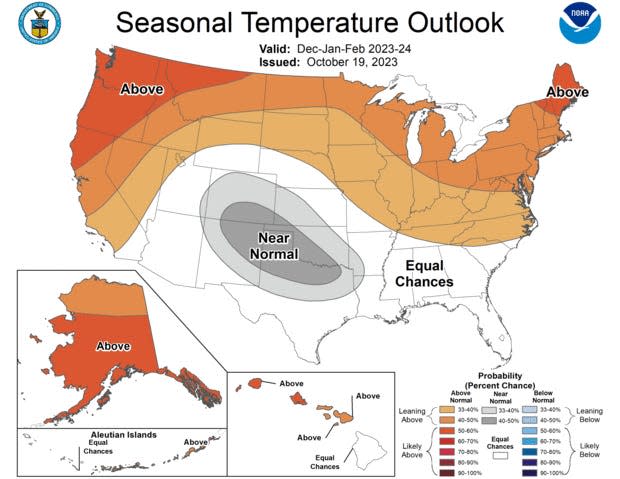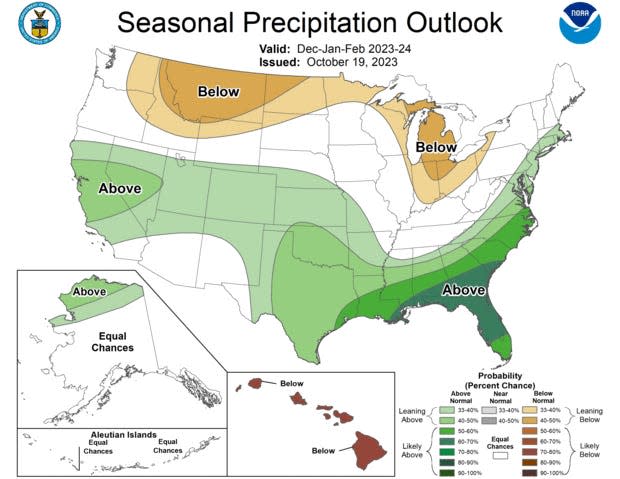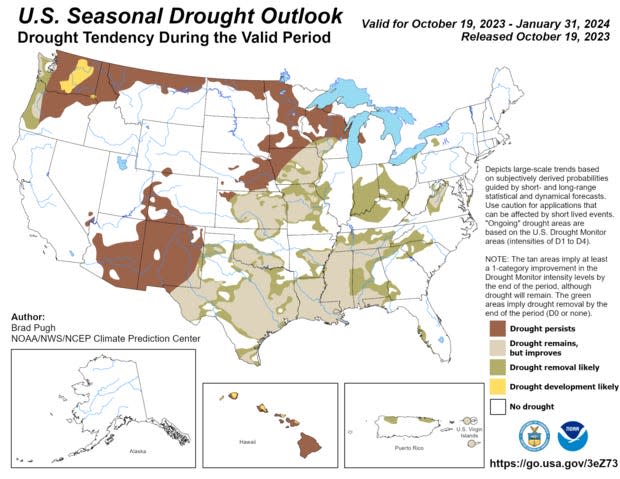See how El Niño will affect winter weather in your area of the US with these 3 forecast maps
This winter, the northern US will experience warmer than average temperatures, thanks to El Niño.
The south will have a wetter-than-average winter through February, NOAA predicts.
Droughts in some parts of the US are expected to persist.
Thanks to El Niño, a northern swath of the US will experience warmer than average temperatures this winter while much of the southern US will see above-average precipitation levels.
El Niño happens every two to seven years when ocean temperatures warm up in the central and eastern Pacific Ocean, impacting weather patterns around the world, according to the National Weather Service.
Northern US will likely be warmer than usual
The National Oceanic and Atmospheric Administration predicts that the highest likelihood of warmer temperatures this December through February is in Alaska, the Pacific Northwest, and northern New England.
The upper Midwest, California, and parts of the South are also likely to be warmer than average.

Southern US will likely be wetter than usual
While the northern US will likely be warmer, the southern US will likely be wetter between December and February, with the highest odds of above-average precipitation levels in Florida, southern Georgia, and southern Alabama, as seen in the map below.
Parts of the West, Southern Plains, and Southeast are also forecast for more rainfall this season.

Drought will persist in parts of the Southwest
El Niño's arrival is also likely to affect drought conditions in parts of the US.
Ongoing droughts in the northern Rockies, northern Great Plains, and portions of the Southwest are expected to continue from October through January, as shown in the map below.
Droughts in parts of the South and lower Midwest may improve or disappear entirely, NOAA predicts.

Overall, this winter's El Niño — the first in four years — has a 30% chance of being as strong as, or stronger, than powerful El Niño's in the past, including that of the 1997-98 winter and the 2015-16 winter, according to NOAA.
Read the original article on Insider

 Yahoo News
Yahoo News 